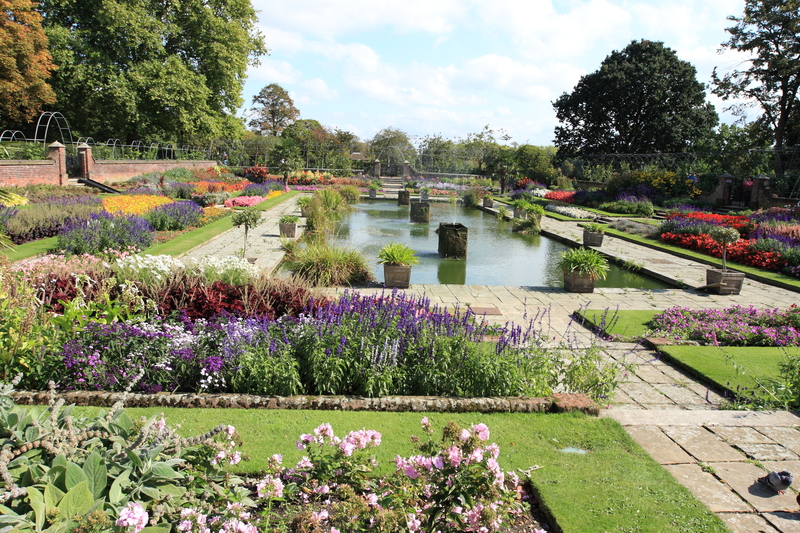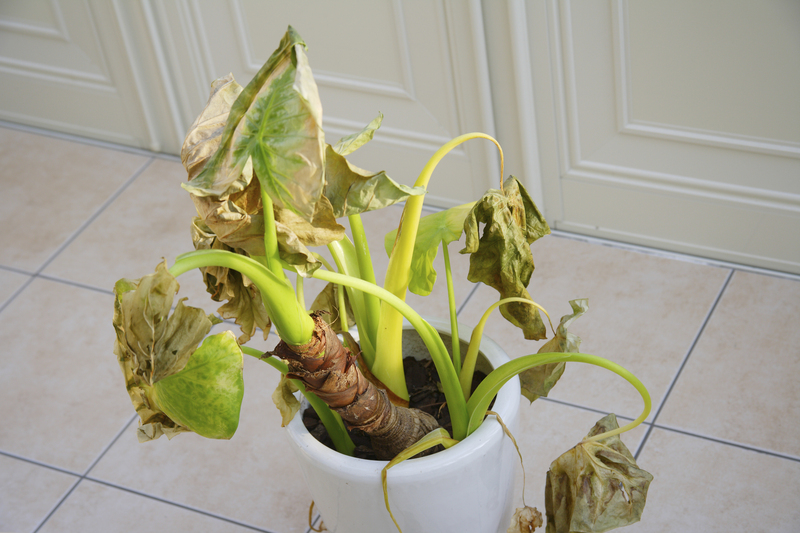Keep Weeds at Bay: 3 Tips for a Cleaner, Greener Garden
Posted on 03/09/2025
Keep Weeds at Bay: 3 Tips for a Cleaner, Greener Garden
Garden weeds are the bane of every passionate gardener's existence. Not only do they mar the beauty of your outdoor space, but they also compete aggressively with your cherished plants for water, nutrients, and sunlight. Keeping weeds at bay is crucial for maintaining a lush, healthy, and thriving garden. Whether you are a seasoned green thumb or a new garden enthusiast, this comprehensive guide offers you the essential tips to control weeds effectively and maintain a cleaner, greener garden all season long.
Why Is Weed Control Important for Your Garden?
Before we dive into the practical advice, it's important to understand why weed management is vital for your garden's health. Weeds are invasive. They often grow faster than cultivated plants, and if left unchecked, they can:
- Suffocate desirable plants by blocking sunlight and consuming nutrients
- Alter soil composition and pH, sometimes making it less suitable for your flowers and vegetables
- Harbor pests and diseases that can spread to ornamental and edible plants
- Make your garden look untidy and increase maintenance
Weed prevention helps in safeguarding the investment of time and effort you put into making your garden beautiful and productive. Let's get into actionable strategies for keeping your garden weed-free.

3 Proven Tips to Keep Weeds at Bay
1. Practice Smart Mulching Techniques
Mulching is among the most effective ways to stop weeds before they start. Mulch creates a barrier that suppresses weed germination and growth by blocking sunlight. Here's how you can make the most of mulching:
- Choose the Right Mulch: Organic mulches like shredded bark, straw, compost, and grass clippings not only help control weeds but also enhance soil quality as they decompose. Inorganic mulches like landscape fabric, pebbles, and rubber can be great for long-term weed suppression in specific areas, such as pathways.
- Apply the Correct Depth: Lay mulch about 2-4 inches thick. Too little mulch won't stop sunlight from reaching weed seeds, while too much can suffocate plant roots and cause rot.
- Replenish Mulch Regularly: As organic mulch decomposes, top it up to ensure continued weed suppression throughout the growing season.
Bonus tip: For especially weedy areas, consider laying landscape fabric before spreading mulch. Cut holes only where your plants will go, creating an extra barrier for those pesky intruders!
2. Tackle Weeds Early and Consistently
The best time to kill weeds is when they are young and small, and their roots haven't established. Early and consistent action is the key to weed-free gardens. Here's how:
- Weed After Rainfall: Moist soil makes it easier to pull weeds by hand, roots and all. For stubborn weeds, use a hand fork or a weeding tool to loosen the soil before pulling.
- Stay on Schedule: Set aside time each week for a quick weed patrol. A few minutes spent regularly saves you hours of labor later in the season.
- Never Let Weeds Go to Seed: One weed can produce thousands of seeds, creating an even bigger problem next year. Uproot weeds before they flower and seed to keep your garden under control.
- Dispose of Weeds Properly: Never add seeding weeds to your compost pile, as this can spread seeds back into your garden. Bag and discard them or use a hot compost method to destroy seeds.
When you make weed removal part of your regular gardening routine, you not only reduce their numbers but also encourage healthier, more robust plants.
3. Encourage Healthy Plant Growth and Soil Coverage
One of the most natural weed control methods is to minimize bare soil by ensuring your beds are filled with dense foliage and ground covers. Here's how healthy plants help you keep your garden weed-free:
- Start Close Planting: Arrange plants close together according to their mature size, so their foliage shades the soil. This reduces available light and space for weed seeds to germinate and grow.
- Use Ground Covers: Fast-spreading ground cover plants, such as creeping thyme, ajuga, sedum, or vinca, act as a living mulch. They create a thick carpet that keeps weeds out while adding beauty and interest to your landscape.
- Improve Your Soil: Healthy soil grows strong plants, which are better able to outcompete weeds. Regularly add organic materials like compost, and practice crop rotation in vegetable gardens. Monitor your soil's pH and adjust if necessary.
- Edge Your Beds: Creating clear garden bed edges with physical barriers (like bricks, stones, or edging strips) discourages grass and spreading weeds from invading your borders.
By optimizing your garden's design and soil health, you create conditions where desirable plants flourish and weed problems are minimized.
Extra Tips for Long-Term Weed Management
Beyond the three main strategies, here are a few more expert-approved tips and tricks to keep weeds at bay year after year:
- Water Wisely: Use soaker hoses or drip irrigation to directly water your plants, not the soil between them. Wetting only targeted areas deprives weeds of the moisture they need to germinate and thrive.
- Try Sheet Mulching or "Lasagna" Gardening: For new beds or overly weedy areas, layer cardboard or newspaper, then top with compost and mulch. This smothers existing weeds and creates a rich, plant-friendly foundation.
- Rotate Crops in Vegetable Gardens: Certain weeds are attracted to specific crops. Rotating your plantings helps disrupt weed growth cycles and improves soil health at the same time.
- Use Organic Weed Preventers: Corn gluten meal and other organic pre-emergent products can stop weed seeds from germinating. Apply these at the right time in spring for best results.
- Grow a Dense Lawn: In grassy areas, mow high to encourage healthy grass growth that shades out weed seedlings. Overseed bare spots in the fall or early spring.
- Avoid Disturbing the Soil: Weed seeds are often buried several inches deep, only sprouting when brought to the light. Try to minimize digging or tilling your garden beds to prevent bringing dormant weed seeds to the surface.
Understanding Different Types of Weeds
Knowing your enemy makes it easier to fight back. Weeds come in a few major types:
- Annual Weeds - Such as crabgrass, chickweed, and pigweed, these sprout, flower, and die within one season. Remove them before they set seed!
- Perennial Weeds - Examples include dandelions, bindweed, and quackgrass. They return year after year, usually from deep root systems. Eradication requires removing the entire root.
- Biennial Weeds - These, like burdock and mullein, grow leaves the first year and flower/seed in the second year. Remove them before their second-year bloom for best control.
Identifying weed types in your garden will help you select the right weed control method and apply it at the most effective time.
Eco-Friendly Weed Control: Why Avoid Harsh Chemicals?
Many commercial weed killers contain herbicides that can affect not just weeds, but also beneficial insects, pets, and the broader ecosystem. Here are some risks:
- Soil contamination that affects earthworms and beneficial microbes
- Residual chemicals can leach into water systems, harming aquatic life
- Hazardous to pollinators like honeybees and butterflies
Organic and manual weed prevention methods are safer for your family, pets, and the environment. When using any herbicide, always follow directions carefully, and prioritize spot-treating only the worst offenders.
Seasonal Weed Management Tips
Keeping weeds at bay requires year-round attention. Here's how to adapt your strategies through the seasons:
- Early Spring: Mulch beds before weed seeds germinate. Pull out any overwintered weeds while the soil is soft. Apply pre-emergent organic weed preventers if desired.
- Late Spring to Summer: Regular hand weeding, keeping up your mulching, and ensuring plants are densely spaced.
- Fall: Clean up spent annuals, mulch beds for winter, and overseed lawn bare patches. Remove late-flowering weeds before seeds set.
- Winter: Review your garden's layout and plan changes to improve weed prevention for the upcoming year.
The most beautiful, productive gardens are those where weeds are managed consistently, not just occasionally.

Frequently Asked Questions About Weed Prevention
Can I eliminate all weeds entirely?
While it may not be possible to eradicate every weed, consistent weed control can drastically reduce their presence and impact--making your garden healthier and more enjoyable.
Are there any plants that naturally suppress weeds?
Yes! Ground covers like pachysandra, sedum, vinca, creeping thyme, and even some low-growing herbs naturally outcompete weeds by shading and occupying available soil.
How soon after mulching will weeds stop growing?
Mulch quickly blocks sunlight and, within a week or two, should halt most new weed seedlings. Keep an eye out for any persistent weeds and remove them promptly.
Conclusion: Create a Garden You Can Be Proud Of
Keeping weeds at bay doesn't have to be an endless battle. By employing the right weed control strategies--mulching, regular weeding, dense planting, and soil management--you can enjoy a cleaner, greener, and more beautiful garden all season long.
Remember, a healthy garden is a reflection of consistent, caring effort. Equip yourself with these practical tips and watch as your landscape flourishes--lush, vibrant, and (almost) weed-free!
Start implementing these simple steps today, and reclaim your garden sanctuary from weeds once and for all!

